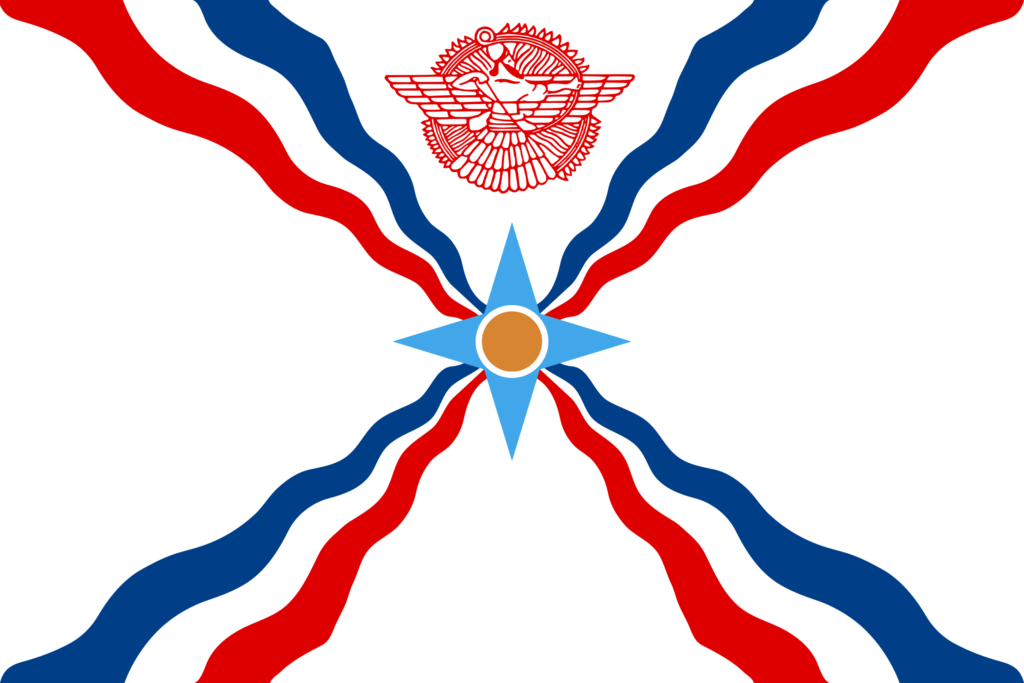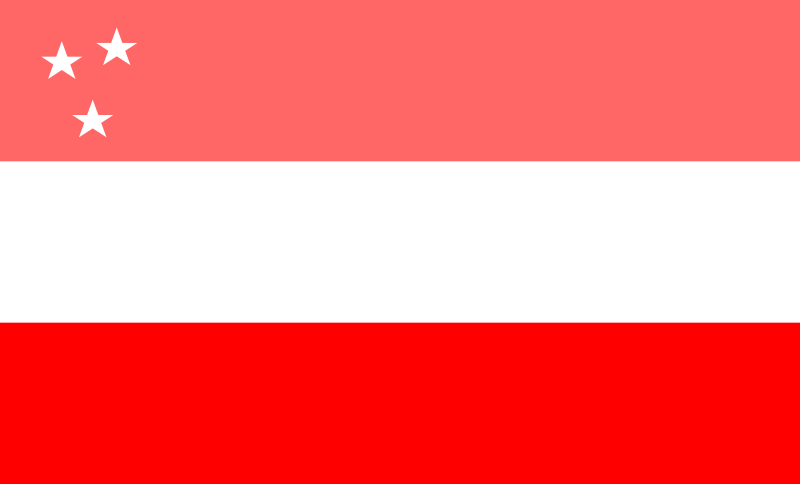The History and Meaning Behind the Assyrian Flag
Date: March 27, 2017

As a tribute to the traditional twelve-day celebration of the Assyrian New Year, we’re sharing unique ways to honor Akitu no matter where you are in the world as we count down the days to Kha b’Nissan 6767.
An easy way to mark the Assyrian New Year: Display the flag. Whether it’s outside your house or on your car: Fly it proudly. Here’s some information on the background and meaning of the Assyrian flag.
Some background
The Assyrian flag was designed by George Bit Atanus in 1968, but it wasn’t until 1971 that it was officially adopted by all Assyrian organizations. The flag’s design bears a white background with a golden (not yellow!) circle at the center, surrounded by a four-pointed star in a light blue—commonly referred to as the Assyrian Star. Four triple-colored, widening, wavy stripes connect the star to the four corners of the flag in red, white, and blue. Above the star sits the ancient Assyrian god Ashur.
What does it mean?
- Golden circle: Represents the sun, which by its exploding and leaping flames, generates heat and light to sustain the earth and all living things.
- Assyrian star: Symbolizes the land—its light blue color denotes tranquility.
- Stripes: Representation of the three major rivers of Assyria: Tigris, Euphrates, and the Great Zab—in red, blue, and white, respectively. The blood red also stands four courage, glory, and pride. The white symbolizes peace. It is also said that the stripes symbolize the path back to the homeland.
- Ashur symbol: A tribute to the ancient Assyrians.
Did you know?
 At one point, this was the official Assyrian flag, adopted prior to World War I. Created by the Syriac Orthodox community of Tur Abdin, the flag had three horizontal stripes in salmon, white, and red. On the salmon layer, there were three white stars positioned in the top left corner. These stars represented the three main churches of the Assyrian people: Church of the East, Chaldean Catholic Church, and Syriac Orthodox Church. The flag was used during delegation meetings between Assyrian politicians and Western leaders. This flag was abandoned in favor of Bit Atanus’s design.
At one point, this was the official Assyrian flag, adopted prior to World War I. Created by the Syriac Orthodox community of Tur Abdin, the flag had three horizontal stripes in salmon, white, and red. On the salmon layer, there were three white stars positioned in the top left corner. These stars represented the three main churches of the Assyrian people: Church of the East, Chaldean Catholic Church, and Syriac Orthodox Church. The flag was used during delegation meetings between Assyrian politicians and Western leaders. This flag was abandoned in favor of Bit Atanus’s design.
